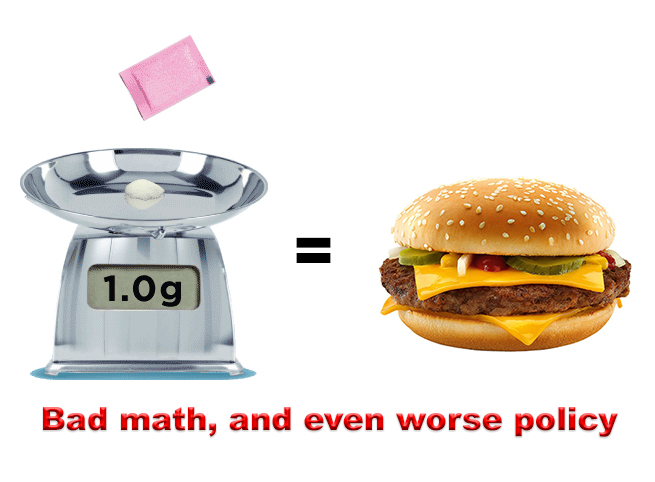We post news and comment on federal criminal justice issues, focused primarily on trial and post-conviction matters, legislative initiatives, and sentencing issues.

COMPASSIONATE RELEASE AND SEC 404 DENIALS CANNOT BE ROTE
Since prisoners have been permitted to file motions for sentence reduction under 18 U.S.C. § 3582(c)(1)(A)(i) – generally known as “compassionate release” – and motions for application of the Fair Sentencing Act of 2010 under § 404 of the First Step Act, we have seen district court denials that seemed pretty summary and “cookie cutter.”
 To be sure, courts have had to deal with thousands of such motions, and undoubtedly the judges detail review and preparation to their junior-most clerks. But I am reminded of a surgical procedure I had a few years ago. The surgeon dismissed my concerns with a breezy “don’t worry – yours will be my 1,500th one of these.” I responded, “Maybe so, but will be my first.”
To be sure, courts have had to deal with thousands of such motions, and undoubtedly the judges detail review and preparation to their junior-most clerks. But I am reminded of a surgical procedure I had a few years ago. The surgeon dismissed my concerns with a breezy “don’t worry – yours will be my 1,500th one of these.” I responded, “Maybe so, but will be my first.”
Compassionate release and § 404 motions are like that. Joe Prisoner’s motion may be the hundredth one the court has decided, but for Joe, it’s his first.
Decisions from the 4th and 7th Circuit a week ago delivered a stark reminder to district judges that denials of such motions should give due consideration to the movant’s arguments and evidence – not necessarily to accept them –but at least to note what the prisoner said and to explain why that argument is insufficient to carry the day.
Jon Singleton, having done 14 years already for a meth conspiracy, sought compassionate release because of COVID. Jon’s district court found that he had not shown an extraordinary and compelling reason for release because he had twice refused the vaccine. The thinking is that anyone who refuses the vaccine can hardly be sincerely worried about the effects of COVID-19. If that weren’t enough, the district court said, the seriousness of Jon’s offense one and a half decades ago made the original sentence correct.
On appeal Jon complained said the district court had it wrong. He had refused the vaccine only once, and that time he did so only because he had a history of allergic reactions to vaccines and “was denied the ability to consult with a medical professional prior to vaccination.”
 This was hardly a novel complaint: Dr. Homer Venters, a court-appointed epidemiologist who inspected FCI Lompoc for an ACLU class-action lawsuit against the BOP over COVID, lambasted the BOP over a year ago for the agency’s “take it or take a hike” approach to administering the COVID vax. Venters told the Central District of California District Court that he was “extremely concerned” about low inmate vaccinating rates, which he attributed to prison staff not addressing inmates’ “very valid and predictable concerns” about the effects the vaccine might have on their underlying health conditions. Rather than address inmate questions, Venters testified, prison staff dismissively told the inmates to either “take the vaccine or sign a refusal form.”
This was hardly a novel complaint: Dr. Homer Venters, a court-appointed epidemiologist who inspected FCI Lompoc for an ACLU class-action lawsuit against the BOP over COVID, lambasted the BOP over a year ago for the agency’s “take it or take a hike” approach to administering the COVID vax. Venters told the Central District of California District Court that he was “extremely concerned” about low inmate vaccinating rates, which he attributed to prison staff not addressing inmates’ “very valid and predictable concerns” about the effects the vaccine might have on their underlying health conditions. Rather than address inmate questions, Venters testified, prison staff dismissively told the inmates to either “take the vaccine or sign a refusal form.”
Two weeks ago, the 4th Circuit sided with Jon. “Initially,” the Court said, “the district court erroneously stated that Singleton refused the vaccine twice; the record reveals that he refused the vaccine only once. Moreover, the district court failed to consider Singleton’s argument that he refused the vaccine because he had a history of a severe allergic reaction to the influenza vaccine and other medications and was denied the ability to consult with a medical professional prior to vaccination. Because the district court made a factual error and failed to consider Singleton’s individual circumstances, we conclude that the court abused its discretion…”
Jon also complained the district court failed to consider (1) his rehabilitation evidence; (2) his argument that a “time served” would constitute just punishment; (3) his low recidivism score; and (4) that due to a change in state law, one of his prior drug felonies was reduced to a misdemeanor, which would have reduced his criminal history category. The Circuit agreed: “Given the amount of time Singleton spent in prison before filing his motion and the fact that the district court did not acknowledge any of his many arguments that relied on post-sentencing conduct and circumstances, we conclude that the district court abused its discretion in considering the § 3553 factors.”
Jamell Newbern was convicted of crack distribution in 2005. Because he had two qualifying prior convictions, he was sentenced as a Guidelines career offender. At the time, the district judge said he would have sentenced Jamell to the same term even if he had not been a career offender.
 The District Judge had long since retired. Since 2005, one of Jamell’s two prior convictions (reckless discharge of a firearm) was held to not be a crime of violence. But the new judge on Jamell’s case reimposed the original 300-month sentence, adopting the retired judge’s position that 300 months was warranted whether or not Jamellwas a career offender or not. The new judge did not even address Jamell’s post-sentencing record.
The District Judge had long since retired. Since 2005, one of Jamell’s two prior convictions (reckless discharge of a firearm) was held to not be a crime of violence. But the new judge on Jamell’s case reimposed the original 300-month sentence, adopting the retired judge’s position that 300 months was warranted whether or not Jamellwas a career offender or not. The new judge did not even address Jamell’s post-sentencing record.
Last week, the 7th Circuit agreed that the new judge’s adoption of the prior judge’s determination that Jamell’s conduct warranted a 300-month sentence regardless of his status as a career offender.
“But,” the 7th said, “we see things differently when it comes to the district court’s failure to respond to Newburn’s argument for relief based on his good behavior in prison. Concepcion expressly established that conduct in prison—good or bad—can be properly considered in a First Step Act motion. Newburn meaningfully emphasized his positive record in his motion. By no means was Newman making a throwaway point. To the contrary, he devoted about a full page of his motion to highlighting his clean disciplinary record, employment in prison, completion of a drug-education course, and earning a GED. Concepcion v. United States does not require a detailed explanation in response to these considerations, but we cannot be sure that the district court considered Newburn’s arguments when it provided no explanation at all.”
The Circuit said that in light of Concepcion, “it is clear that the district court’s failure to address Newburn’s good-conduct argument rises to the level of procedural error.”
United States v. Singleton, Case No 21-6798, 2022 U.S.App. LEXIS 27943 (4th Cir., Oct. 6, 2022)
Santa Barbara Independent, Doctor ‘Extremely Concerned’ About Low Vaccination Rate Among Lompoc Prisoners (May 20, 2021)
United States v. Newbern, Case No. 22-1244, 2022 U.S.App. LEXIS 28348 (7th Cir., Oct. 12, 2022)
– Thomas L. Root









